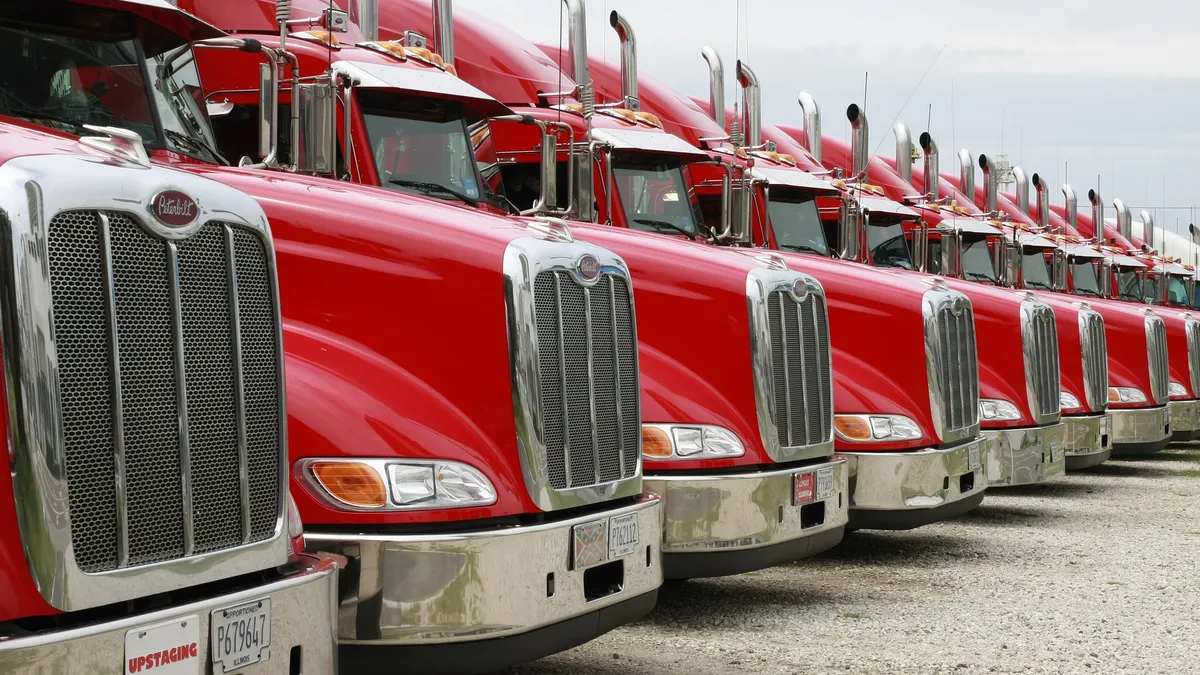Dive Brief:
- Fewer used trucks are entering the market because transporters are trying to maintain and add to all the trucks they have to handle the capacity crunch, FreightWaves reports.
- Studies from J.D. Power Valuation Services and FTR, as cited by FreightWaves, say fleets are keeping older trucks, even as they purchase new ones.
- Meanwhile, demand for trailers is "at strong levels," FTR said, with 21,200 sold last month.
Dive Insight:
The average class 8 truck sold in April was 81 months old and had 459,000 miles, according to the JD Power report, which cited a shortage of used trucks with less than 400,000 miles.
"There are not enough available trucks to haul the increasing amount of freight, so fleets are not trading in as many trucks when they buy new ones," Don Ake, VP, Commercial Vehicles at FTR told Supply Chain Dive. "They need to expand their fleets, so they don’t trade in their used trucks; they keep using them to haul more freight. ELD [Electronic Logging Device] conversion has reduced industry productivity and, along with the significant increase in freight, has created a capacity crisis."
Ake added that original equipment manufacturers (OEMs) are having problems making new trucks fast enough because of their suppliers' inability to meet demand, making it more difficult for transportation companies to get new vehicles.
Meanwhile, the capacity shortage is forcing fleet operators to buy more trailers and to think creatively, Ake explained.
"Fleets are utilizing trailers to overcome productivity losses by doing more drop-and-hook hauling and other strategies," he said. "Using trailers in this way also helps maximize the productivity of the drivers, which is important to fleets having difficulty finding enough drivers. So some fleets are buying more trailers to compensate for not having enough drivers."












